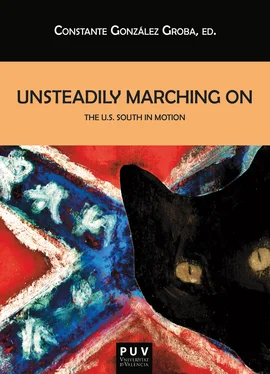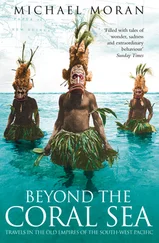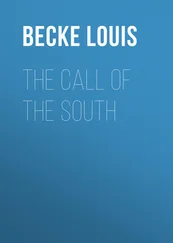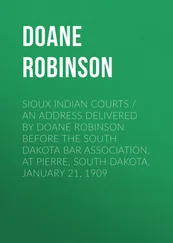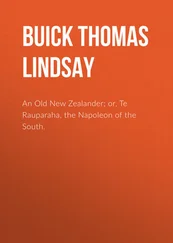A principal concern for southern literature, perhaps for all literatures, has always been the nature of time and how change affects the individual. The conflict between tradition and change provided the writers of the Southern Renascence with some of their recurrent images and made southern literature famous for its preoccupation with the nature of the passage of time and the way social change affects the individual. Southern literature abounds in characters whose resistance to change makes them grotesque and self-destructive, like Hightower in Faulkner’s Light in August , and Hazel Motes in Flannery O’Connor’s Wise Blood , which traces the reverse Pilgrim’s Progress of a fanatical exsoldier toward his goal of a Church Without Christ. In many works the central conflict is that between changers and preservers, with the preservers sometimes seen in a positive light – like Mrs. Johnson and Maggie in Alice Walker’s “Everyday Use” – because they defend an empowering family tradition and continuity; at other times they are denounced for their intolerance, such as in the case of the ladies of the Missionary Society in Harper Lee’s To Kill a Mockingbird who staunchly defend the racism and sexism of their society. Some individuals and societies are more prone to the movement and change that brings a sense of heightened awareness of the world than others that prefer the connectedness and the security of the familiar. In nature too some animals are constantly walking, running or flying, whereas others have to hibernate or stay close to their lairs in order to survive. The tendency to move and the tendency to rest often coexist in the same individual or society, and both are not only necessary but also complementary, as are the doing that accelerates our existence and the being that applies the brakes when necessary. Bobbie Ann Mason, who participated in our conference, has repeatedly written about the dilemmas of people who confront drastic and rapid change in the postmodern South, about the dichotomy between those who are born to run and take advantage of the greater possibilities provided by a changed culture, and those who stick to their old ways and put blinders on to protect themselves from outside influences. Whereas in stories of the 1980s like “Residents and Transients” and “Love Life” Mason clearly advocates transience and the roaming disposition, and tends to identify the “call of the hearth” with stasis and death, in some of the stories of her third collection, Zigzagging down a Wild Trail (2001), she is much more ambivalent. Significantly, this ambivalence coincides with her own move back to rural Kentucky from the Northeast in the spring of 1990, and her concomitant discovery that it is when you return that you discover and know for the first time where you came from, that the place where you belong is where you know who you are. The Mason who in the 1980s preferred the straight lines of those who go away from home into the world, resorted in the late 1990s to one of the favorite symbols of the conservative Nathaniel Hawthorne—the spiral, which fuses the opposites of roaming and a center. In her memoir Clear Springs (1999) she writes: “But I always knew where my center was—here, on this land. This is my parents’ greatest gift—this rootedness, this grounding. It is what has let me roam. I’ve been like a hawk on a gyre, flying off, ranging as fast as I can—yet always spiraling back, securely tethered to home” (280). In her memoir Mason returns to the dilemma between the two types of wild cat populations that had provided the dominant metaphor for her characters’ ambivalence about their roots in her first story collection Shiloh (1982):
For a long time, I’ve been preoccupied with why some folks stay and some stray. I read about a scientific study of cats in the wild. It had been assumed that cats who established a territory, or home base, were the successful ones, while those who remained roamers were the losers. The study uncovered evidence that the transients, not the residents, might be the more resourceful cats, accepting greater risks and more varied opportunities for prey and mates. It was almost as though they were exercising imagination. It’s an old question—the call of the hearth or the call of the wild? Should I stay or should I go? Who is better off, those who traipse around or those who spend decades in the same spot, growing roots? (280)
She is no longer sure, and gives an answer to which Nathaniel Hawthorne would subscribe wholeheartedly and which rejects the exclusive logic of either/or in favor of an inclusive one of both/and: “The way I see it, a clever cat prowls but calls home occasionally. The answer is the mingling of sunlight and shadow; it’s ambiguity, not either-or. The best journeys spiral up and around [...]. In the Zen journey, when you return, you know for the first time where you came from” (280-81).
A central concern of literature has always been that of journeys, the journey being a most basic narrative action. Indeed, literature and travel have always been inseparable, so much so that writing is itself movement; it is a journey on which the writer embarks toward a destination as uncertain as it is fascinating. Who does not remember metaphors that equate life with travel and speak about the individual’s life on earth as a journey? The first section of this book is about narratives that deal with journeys that code the passage through life of characters that are either in flight from or in search of themselves, or both. Our journey begins on the Mississippi, the river that was once the commercial artery of the nation and which continues to carry new blood and renewed energies to American fiction. In his wide-ranging essay, Bill Lazenbatt takes us on a most eventful and varied journey down the river that has such a permanent significance in the history and literature of the South, through representative texts of Mark Twain, William Faulkner, Richard Ford and Lee Smith. Making use of Judith Butler’s notion of the performative and repetitive quality of gender definition, Lazenbatt explores the minds of several male voyagers on the Mississippi “to enquire into the extent to which their river experiences help to clarify or consolidate their gender definition and sense of masculinity.” Huck Finn’s rafting to selfdiscovery takes him to a manhood that goes far beyond physical prowess into serious moral dimensions. As Lazenbatt argues, in Twain’s novel the journey concludes with Huck leaving “his early social subservience behind and shoulder[ing] in its place a sense of morally brave masculinity.” Lazenbatt also addresses the ambiguities of gender definition and the questioning of masculinity in the “Wild Palms” narrative which are counterbalanced, in Faulkner’s The Wild Palms , by the display of active, assertive maleness of the convict protagonist of “Old Man,” who comes full circle after the river, itself known as “Old Man,” tests his manhood.
Lazenbatt also considers Richard Ford’s A Piece of My Heart , in which there are similarities to Huckleberry Finn and The Wild Palms , and in which the protagonist searches for renewal in the Mississippi by whose power the appropriately named Newel is tested and rebaptized into confident manhood. In a most interesting coda, Lazenbatt turns to the women in connection with the “masculine” river in Lee Smith’s The Last Girls , which trespasses on “male territory” (the Mississippi has traditionally been considered to be masculine) with unconvincing results. In his opinion, the voyage “lacks any real sense of the river as a significant presence, as it is in the male fiction discussed.” The river exerts no worthwhile influence on the women’s lives, serving only as a reminder of their early raft trip which they are commemorating aboard a tourist riverboat. Lee Smith may reflect accurately what Lazenbatt terms “the commercialism and consumerism of the contemporary and synthetic Mississippi experience,” but all the mythical force of the river god is irretrievably gone.
Читать дальше
